Abstract
Emirates Airline is a Dubai based company that has carved a niche for itself in the international scenario. The airline, in addition to the domestic market (UAE), caters to the needs of several countries around the globe. Due to arrival of new entrants and the stiff global competition, airlines have to adopt various measures for sustenance.
Emirates Airline is also feeling the heat of such competition and has adopted certain measures to sustain the competition. In addition to the low-price strategy being followed by the airline, various quality measures have also been adopted.
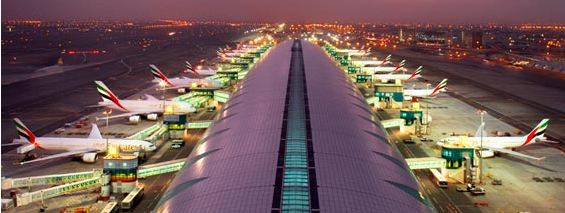
Being a service based industry, Emirates Airline stresses on providing the best service to its customers. In pursuance of this policy, the airline has included several new features in its aircrafts that enhance the quality and comfort of travelling.
Introduction To The Study
Background of the company
‘Emirates Airline’ is the leading company of ‘The Emirates Group’ (The Emirates Group, 2014). The Dubai government is the sole owner of the airline. “On 25th October 1985, Emirates flew its first flights out of Dubai with just two aircraft – a leased Boeing 737 and an Airbus 300 B4” (Emirates, 2014a, p. 1).
The airline has always stressed on quality rather than quantity, and it is due to this policy that the airline has become one of the most favoured airlines of the world. After inception, the initial two years were a bumpy ride for the airline but third year onwards, the airline posted substantial profits without fail.
In addition to ferrying passengers to and from international locations, the airline also has a full-fledged cargo division. The airline also offers destination management and airline information technology development services (Emirates, 2014a).
Industry in which the company competes
In today’s world of diverse business opportunities and fierce competition in each of them, the customer or the end-user is at the receiving end of the benefits. The price and the service standards are the main concerns for the majority of customers while buying airline tickets.
This is because there are so many options to choose from. It’s not that if a customer can’t get a ticket from a particular airline, he/she cannot travel. There are always other options available. As such, in today’s competitive world, the airline companies have to keep their prices to the bare minimum so as not to lose customers.
The airlines also have to provide best of services in order to win the hearts of their customers. Moreover, due to the relaxation in the aviation policies of various governments, there has been an incessant growth in the number of Low Cost Carriers.
In order to survive this competitive atmosphere, the airline companies are forced to reduce their prices and at the same time, offer one way tickets as well (especially in the case of international flights). But such measures should not affect the service standards.
Under such circumstances, the profit margin of the airline companies has decreased substantially. It is obvious, that somehow or the other these airline companies are always on the look-out for any chance to increase the overall profit.
One of the easiest methods adopted by the airlines is to increase the capacity of the aircraft or in other words buy bigger aircrafts. Even though this is a costly affair but during the long run the airlines are benefitted.
Strategy Of The Company
Considering the expectations of its customers and the growing global competition, Emirates Airline has adopted a low-cost strategy. The services of Emirates Airline are already world-class, therefore the only thing that might attract new customers and retain the existing ones, is the price.
Airline companies, worldwide, have adopted their own revenue management systems in order to cope up with such circumstances. Various researches have been conducted on the international airways as regards to their revenue management strategies as well as the implementation of the adopted business models.
Evaluation of the available revenue management strategies, business models and their implementation will be the basis for offering recommendations. The evaluation will help in establishing the relationship between the three aspects being observed and the impacts they have in the attainment of the airline’s revenue and business goals, missions, and visions.
Operational Areas
Briefly explain the 10 Operational areas in Operations Management and provide examples for each one from the company’s perspective
Following are the ten operational areas in Operations Management, with specific examples from the perspective of Emirates Airline:
- ‘Design of goods and services’
During this stage, the organizations decide on the kind of service and the quality of goods to be provided to their customers. The cost factor is the main concern during the decision process. Emirates Airline is committed to offer low prices and best services to its customers.
- ‘Quality’
Due to the stiff global competition, organizations have to comply with highest quality standards in order to impress their customers. Emirates Airline has the best quality in terms of its aircrafts, service, and booking related assistance. All the employees have instructions to strictly adhere to the airline’s quality policy.
- ‘Process and capacity design’
Tangible products have a greater significance during this process rather than those pertaining to the service aspect. The kind of technology used and the expertise of the employees matters a lot.
Other factors that decide the cost are the quality of product being offered and the maintenance required for such products. Emirates Airline ensures that its aircrafts are the best in the industry. Emirates Airline was the first airline to include private suites in specific airplanes (Forbes, 2012).
- ‘Location’
In order to be a key player in the global business, the location plays an important role. Easy access to the international community facilitates the expansion of business. UAE is one of the important destinations for conducting international business. Emirates Airline is based in the UAE and this gives the airline an added advantage.
- ‘Layout design’
Customers are highly impressed by the layout design of organizations in the service industry. It leaves an everlasting impression in their minds. The aircrafts of Emirates Airline are beautifully designed to suit the customers’ taste. The interiors bear a homely atmosphere.
- ‘Human resource and job design’
Employees play a crucial role in the success of any organization. The employees become all the more important in service industry because they are the ones who are in direct link with the customers. As such, suitable standards should be set for employees to follow.
Emirates Airline has strict guidelines for its employees that require them to behave nicely with the customers. The polite and courteous air-hostesses are an added advantage for the airline.
- ‘Supply chain management’
The supply chain management system of an organization should be perfect so that the customers’ requirements are met within the prescribed time-frame. In order to ascertain that its customers don’t have to wait for various services, Emirates Airline has separate departments to ensure efficient working. The airline has gone to the extent of opening a cargo division that works independently.
- ‘Inventory’
There are various factors that have to be considered in this operation; vendors, availability of goods, human resources, and the holding cost. As mentioned above, Emirates Airline has a separate cargo division that works independently in order to ascertain timely delivery of goods.
- ‘Scheduling’
The scheduling of goods/services should be commensurate with the requirement of customers. UAE being an international destination for business and also for changing long-distance flights, it is very crucial for airlines to have a suitable flight schedule. Emirates Airline has designed its flight schedule after considering such requirements and tries its best to accommodate the transit-passengers.
- ‘Maintenance’
Maintenance of tangible assets is a must for organizations so that their customers get uninterrupted services at all times. Emirates Airline has a full-fledged maintenance department that caters to the maintenance needs of its aircrafts and other equipment.
Product And Service Design
Provide examples and discuss the various product/service designs that the company uses for its products or services
Emirate Airline, in adhering to its mission, is committed to offer quality service to its customers. The airline aims to be the best among the global airlines. In pursuance of its mission, the airline introduces new features and products in its aircrafts at frequent intervals.
The latest addition to such new features is the introduction of private suits in its ‘Emirate A380’ aircraft. Other features include in-flight shower arrangement and not less than 1000 channels for entertainment. The aircraft also has Wi-Fi connectivity that can be accessed from anywhere within the aircraft.
All the seats, irrespective of the class, have personalized video screens. The seats are comfortable so that passengers are comfortable, especially during long-distance flights. The food served is awesome and caters to the taste of the passengers. The children are treated with great care during flights. Special arrangements are available for them during flights.
On ground, the airline has first class lounges where passengers can relax during transits. The first class and business class passengers are provided with complimentary chauffeur-driven vehicles.
Where would you position the company’s products or services in their product life cycles and why do you say so?
There are four stages of product life cycle namely, development, growth, maturity, and decline. In my opinion, not only Emirates Airline but the complete airline industry is in maturity stage now. My opinion rests on the fact that of late there have been numerous airlines that have launched (small and big). This has made survival a tough bargain.
Emirates Airline has increased its budget for research and development to find out ways and means to sustain the competition. The airline has been forced to reduce its prices and use a defensive marketing strategy.
Is the company managing product/service design according to their selected strategy (low cost/ differentiation/ response)?
The airline is following its strategy of low-cost. In order to meet the losses from lower tariffs, the airline has started cutting overhead expenses and other operating costs. The airline is adopting this strategy so that the new entrants are not able to compete with the low tariffs and are discouraged to enter the airline industry.
What is the company doing to consider the effects of legal, ethical and sustainability considerations in the design of their products/services?
In order to fulfil its social and ethical commitments, Emirates Airline operates ‘The Emirates Airline Foundation’. The foundation, “provides humanitarian, philanthropic aid and services for children in need” (Emirates, 2014c, p. 1).
Emirate Airline uses aircrafts that have the latest technology. This helps in reducing emissions. According to the Chairman’s message, “In the air and on the ground, the Emirates Group is committed to acting sustainability in the interests of our customers, our business, the natural environment and the over 130 destinations we serve worldwide” (Emirates, 2014d, p. 1).
The parent group of the airline is committed to minimising the waste through recycling processes. The group advocates and practices minimum use of water and other natural resources. In association with the Dubai government, the group also initiated the ‘Dubai Desert Conservation Reserve (DDCR)’. The group also started the ‘Emirates Wolgan Valley Resort & Spa’. The resort is located in Australia and is a ‘conservation resort’.
Capacity Planning
How is the company managing its capacity? Explain your answer.
Emirates Airline has the following aircrafts in its fleet:
The Emirates A380: The Emirates A380 has the following features, “From private suites and shower spas in first class to flat-bed seats in business class to extra room and custom lighting in economy class, and in-flight Wi-Fi throughout the aircraft” (Emirates, 2014b, p. 1).
Airbus A340-500: Capacity of this aircraft is 258 passengers for all the three classes; the aircraft was included in 2003.
Airbus A340-300: Capacity of this aircraft is 267 passengers for all the three classes. The four engines allow extra range.
Airbus A330-200: This particular aircraft has two versions; one has two classes and the other has 3 classes. Capacity of the one with 2 classes is 278 and the one with 3 classes can accommodate 237 passengers. The aircraft was included in 1999.
Boeing 777-300ER: This aircraft also has two versions. The one with 2 classes can accommodate 427/442 passengers and the one with three classes can accommodate 364/358/354 passengers. This aircraft is considered to be the backbone of the airline.
Boeing 777-200LR: This probably has the best aircraft technology in the world. All features such as safety, comfort, distance, and speed have been enhanced in this model.
Boeing 777-300: This aircraft was included in 1999 and has a capacity of 364 passengers in all the three classes.
Boeing 777-200: This aircraft also has two versions. The one with 2 classes can accommodate 346 passengers and the one with three classes can accommodate 290 passengers.
The airline has different kinds of aircrafts to fly passengers between different destinations. There are different classes as well to cater to the specific needs of passengers. Of late, there have been certain additions to the services in order to impress the customers.
“In the financial year 2011/2012, Emirates carried 34 million passengers and 1.8 million tonnes of cargo” (Emirates, 2014e, p. 1). Emirates Airline operates not less than 1200 flights every week from Dubai. The flights constitute 40% of the total number of flights to and from Dubai (Emirates, 2014f, p. 1).
Do they have enough capacity or do they need more capacity? What do they do if they need more capacity?
Considering the growing number of airlines and the stiff competition, it is advisable that the airline maintains its current fleet. Instead of increasing the passenger capacity, the airline should lay stress on better services.
Once the airline is able to attain a strong customer base, it can go for capacity enhancement. Since the airline is a travel based business, the only resource required would be new aircrafts. The airline, as always, should buy aircrafts from reliable manufacturers.
Provide examples of short-term and long-term capacity planning. What is the difference?
Example of long-term capacity planning: Buying aircrafts
Example of short-term capacity planning: Tariff fluctuation
Long-term capacity planning is done while considering the future market trends. Location plays a key role in long-term capacity planning. Short-term capacity planning is done in order to meet the current demand/market trend. Short-term capacity planning is for a couple of days only. That’s why we notice the fluctuating tariff rates.
Is the company managing capacity according to their selected strategy (low cost/ differentiation/ response)?
Yes, Emirates Airline is managing capacity according to their low-cost strategy. The airline adjusts its tariff according to the prevailing market trends and the customers’ needs. The main aim is to garner more customers. Like for example, the airline introduced special tariff rates for its flights to and from Angola (Emirates Airline with special tariffs for Angola, 2011).
Forecasting
Briefly explain the different forecasting approaches and which approaches the company is using. Provide examples of the company’s forecasting techniques
Following are the four forecasting approaches:
- ‘Delphi technique’
Experts, anonymous to each other, take part in sequence questionnaires. The first questionnaire results are given to the experts and they are asked to answer the second set of questionnaire. This process is repeated until a consolidated set of answers is obtained.
- ‘Scenario writing’
Various starting points are considered and the results are put before the deciding authority. The deciding authority then chooses the best option.
- ‘Subjective approach’
This approach is based on personal feelings and thoughts of experts. The experts do extensive brainstorming sessions and come up with different suggestions. Such sessions are free from any external pressure or influence from the current market conditions.
- ‘Time-series forecasting’
Data from the past is analysed to assess the market trend.
At Emirates Airline, the ‘time-series forecasting’ method is adopted. The airline considers the past data while formulating its long-term and short-term planning strategies.
Provide examples of the time horizons of the forecasts. If necessary, you can use subheadings to highlight this
- Example # 1
Emirates Airline is a massive organization that has different departments. It will be easier (and accurate) for the airline to consider forecasting for the airline as a single entity instead of doing it department wise.
- Example # 2
The time-horizon forecasting of the major aircraft manufacturers showed that there would be an increase in international traffic and a decrease in the domestic traffic. With reference to the airlines of the US, “short term international passenger traffic grew between January/May 2007 and January/May 2008 by 5.7% compared to a decline of 1.9% in domestic passengers” (Button, 2008, p. 32).
Process Selection And Facility Layout
Distinguish between the different process types and facility layouts
The basic aim of a facility layout is to ensure smooth working and unhindered transfer of goods and information. An effective layout can help in minimizing the handling costs and utilizing the available space and manpower in an efficient manner. The bottlenecks are eliminated and communications between different stakeholders becomes fast and easier. ‘Customer service time’ and the ‘inventory handling time’ are minimized. There are three types of layouts namely, process, product, and fixed-position.
- ‘Process layout’
Process layout is, “A layout that groups similar activities together in departments of work centres according to the process or functions that they perform” (Facility layout, n.d., para. 3).
- ‘Product layout’
Product layout is a layout that arranges the functions in a symmetrical manner so that they are performed one by one in order to achieve the required results.
- ‘Fixed-position layout’
As the name suggests, fixed-position layout relates to projects where the products are delicate and huge and it is risky or difficult to shift them.
Which process design is the company following? Explain this briefly
Emirates Airline follows the process layout design. Process design layout is meant for general purpose, whereas the other two are for specific use. This layout allows the employees flexibility in working.
This process design is apt for Emirates airline because there is no fixed time for customers to pour in Another reason that validates the use of this process design is that sometimes the employees might have to remain idle (waiting for customers to come).
The process layout design requires ample space for inventories; the cargo division of Emirates Airline needs huge storage space. The cargo division also uses sophisticated equipment for inventory handling; this feature again coincides with the requirements of process layout design. Finally, the counters of Emirates Airline have ample space for customer movement which is again a requirement of this kind of layout design.
Is the company managing their process design according to their selected strategy (low cost/ differentiation/ response)?
Emirates Airline follows the low-cost strategy and in pursuing the strategy, the airline offers competitive tariffs. In my opinion, the process design followed by the airline will not have much effect on the implication of the strategy. The airline cannot afford to exercise a price-cut on any of the procedures that involve equipment or manpower. These are related to better customer service, which is of prime concern to the airline.
An important aspect to mention here is that Emirates follows the diversity management policy and as such, it has employees from around the world. UAE’s currency is strong in comparison to most of the other global currencies. The employees are paid according to the prevailing rate in their home countries; such pay is very low as compared to the salary trend in the UAE.
But in spite of this policy of the airline, employees prefer to be employed in the airline because of its worldwide reputation. Moreover, no income-tax is levied on Dubai residents. This particular aspect allows Emirates airline to have an ‘employee-salary cost’ that is almost 2/3rd of most of the airlines’ ‘employee-salary cost’.
Location
Where is the company located? Explain your answer
Emirates Airline is a UAE based company with its headquarters at Dubai. The company operates not less than 200 airplanes that fly across various international destinations. The airline has operations in the following areas:
- Africa
In African region, the airline has operations in the following countries: Ivory Coast, Ghana, Ethiopia, Algeria, Egypt, South Africa, Morocco, Guinea, Senegal, Tanzania, Uganda, Zimbabwe, Sudan, Nigeria, Angola, Zambia, Mauritius, Kenya, Seychelles, Libya, and Tunisia.
- Asia & Pacific
In the Asia & Pacific region, the airline has operations in the following countries: Australia, India, New Zealand, Thailand, China, Philippines, Bangladesh, Vietnam, Hong Kong, Pakistan, Indonesia, Afghanistan, Malaysia, Maldives, Japan, Korea, and Taiwan.
- Europe
In the European region, the airline has operations in the following countries: Netherlands, Greece, Spain, United Kingdom, Denmark, Ireland, Germany, Switzerland, Turkey, Ukraine, Cyprus, Portugal, France, Spain, Malta, Italy, Russia, Czech Republic, Sweden, Austria, and Poland.
- North & South America
In this region, the airline has operations in the following countries: United States, Argentina, Brazil, and Canada.
- The Middle East
In this region, the airline has operations in the following countries: United Arab Emirates, Jordan, Iraq, Bahrain, Lebanon, Saudi Arabia, Qatar, Kuwait, Oman, Yemen, and Iran.
Which factors did they consider (were present) when they made this decision?
The prime reason for Emirates Airline to choose Dubai as the base was that the owners (the Royal Family) are from this emirate. Secondly, UAE is an international hub for contracting business. The geographical location of the country makes it a better destination for transit flights.
The UAE has a vast expatriate population (employees and business persons). The expatriates are from around the globe. The operations of the airline around the globe facilitate such expatriates to visit their native place easily and without facing the hassles of changing flights.
In your opinion, is this a good location? Why or why not?
In my opinion, the location of Emirates Airline is perfect because of the above stated reasons. Moreover, UAE is the centre of other airlines as well. So, in order to be in the competitive race, Emirates Airline has to have its base in the UAE.
Also, the airline serves international destinations that are the main hubs of other important competitors. This way, Emirates Airline can have a bite out of the competitors’ business and stay in the competition.
Does the location support their strategy?
Having their base in the UAE definitely supports the strategy of Emirates Airline because all the departments are located at one place and the overhead expenses are minimised. On the other hand, due to the presence of several other airlines, Emirates Airline has to adopt discounted tariffs in order to compete with such airlines.
Quality Management
Discuss the dimensions and management of quality in this section. What is the company doing to improve quality?
Emirates Airline serves food that is commensurate with the class. Like for example, first class passengers are treated to dishes such as, “Stir fried lobster in black bean sauce. Arabic Mezze. Glazed duck breast” (Emirates, 2014g, p. 1).
The quality and service of the food is comparable to the cuisine of best international restaurants. Food is served in ‘Royal Doulton’ dishes. The cutlery is from ‘Robert Welch’. In addition to the awesome food, the finest wine is also served on demand. The best part is that food and wine are available on demand throughout the course of journey.
The business class passengers are treated with, “Regionally inspired food made with the freshest ingredients” (Emirates, 2014h, p. 1). The food is served in the same quality of dishes and cutlery as in first class. Complimentary champagne and other drinks are available on demand.
The passengers have access to Wi-Fi throughout the flight and that too from anywhere within the aircraft. All seats have inbuilt video screens that air not less than 1000 channels (in different languages). The passengers also have the option of using their mobile phones during the flight.
The seats are different for different classes but irrespective of the class, the seats are comfortable and passengers reach their destinations without any fatigue. Like for example, in business class, the seats can be reclined into a bed. The length can be reached up to 79 inches. The seats also have an electric plug so that the passengers can charge their electronic devices such as laptops and mobiles.
What are the costs associated with quality and provide examples for each for the company.
The ‘cost of quality’ is a term that is used worldwide by organizations but at the same time, it is also a term that is generally misinterpreted. Actually, the ‘cost of quality’ is not associated with the cost of manufacturing a product/service. On the contrary, it is the cost of abstaining from creating a quality product/service. Recurrence of jobs increases the ‘cost of quality’. It can be categorised into four major segments as under:
- ‘External failure cost’
This is the cost that is related to the shortcomings found after the client has availed any service or product. Example of such cost with regard to Emirate Airline can be delay in flights or cargo.
- ‘Internal failure cost’
This is the cost related to the shortcomings that are noticed prior to the customer’s availing the service or product. Example of such cost with regard to Emirates Airline can be seat unavailability.
- ‘Inspection (appraisal cost)’
This is the cost related to the inspection of quality standards. Example of such cost with regard to Emirates Airline can be the helpline centre that attends all customer complaints.
- ‘Prevention cost’
This is the cost that is incurred on the efforts to avert bad quality. This helps in reducing the ‘failure cost’ and the ’inspection cost’. Example of such cost with regard to Emirates Airline can be frequent training of the employees.
What are the quality tools and which of the quality tools is the company using?
Following are the seven ‘quality tools’ that are generally used by organizations for process improvement:
- ‘Flow chart’
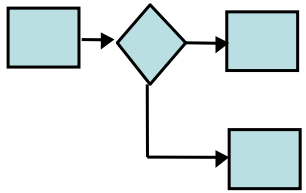
This quality tool analyzes the progression of procedures.
- ‘Cause-effect diagram’
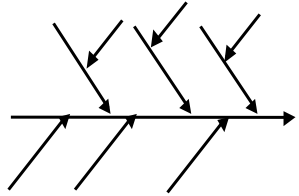
As the name suggests, this quality tool helps organizations in understanding the causes and effects of specific problems.
- ‘Check sheet’
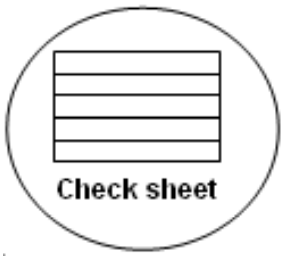
This is the simplest of all quality tools and is used to collect and categorize data.
- ‘Histogram’

This tool depicts the occurrence and the degree of events in relation to two variables.
- ‘Pareto chart’

Unlike the histogram, there is no limit for the use of variables in a Pareto chart. The main purpose of this quality tool is the same as that of a histogram.
- ‘Scatter plot’

By the help of this tool, a link between two variables is established.
- ‘Control chart’
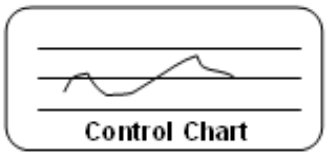
This quality tool is used to monitor the operational practices within an organization.
All these tools have different significance. Emirates Airline makes use of all these tools in order to ascertain that its customers get the best quality possible. These tools help the airline to identify the problems/loopholes within the system and thus enhance the quality of operations.
Do they make use of inspection?
Yes, these tools require inspection because without inspection the facts and figures cannot be ascertained.
What can you recommend to them in terms of quality?
Emirate Airline should try to minimise the transit period between connecting flights. No overbooking should be encouraged. Certain benefits should be attached with tickets booked in advance. The airline should think of increasing baggage allowance.
Conclusion
The importance of this study lies in the fact that any shortcomings that Emirates Airline faces in its revenue management strategies, business models and their implementation needs to be studied and recommendations to be offered to enhance the company’s global market competitive advantage.
The Emirates Airline management will benefit from this study since important sectors that require specific improvement may be identified through this study. Additionally, strategies and business models that account for changing the Emirate Airline’s market environment may also be established.
The study will identify factors that may facilitate the development of suitable revenue management strategies, business models and their implementation as a way of improving the Emirate Airline’s organizational performance.
References
Button, K. (2008). The impacts of globalization on international air transport activity. Web.
Emirates. (2014a). Emirates Airline – Building a global network. Web.
Emirates. (2014b). Emirates A380. Web.
Emirates. (2014c). The Emirates Airline Foundation. Web.
Emirates. (2014d). The Emirates Group commitment to acting sustainably. Web.
Emirates. (2014e). The Emirates story. Web.
Emirates. (2014f). Flying to more destinations on more aircraft every day. Web.
Emirates. (2014g). First Class. Web.
Emirates. (2014h). Business class. Web.
Emirates Airline with special tariffs for Angola. (2011). Web.
Forbes. (2012). The Emirates A380 first class cabin: One indulgent experience. Web.
Facility layout. Web.
The Emirates Group. (2014). The Emirates Group: Committed to the highest standards in everything we do. Web.